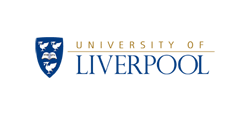Comp 318:
Advanced Web Technologies

Comp 318:
Advanced Web Technologies
Recommended texts:
•Antoniou, van Harmelen: A Semantic Web Primer. MIT Press, 2004
•Gomez-Perez, Fernandez-Lopez, Corcho: Ontological Engineering. Springer-Verlag, 2003
•Heath, Bizer: Linked Data - Evolving the Web into a Global Data Space. Morgan & Claypool 2011
Relevant resources:
Search Engines
•Sergey Brin and Lawrence Page. The Anatomy of a Large-Scale Hypertextual Web Search Engine
•Chris Sherman. Google Unveils More of the Invisible Web
•ISWC 2014 invited talk: Web Search - From The Noun to The Verb. Prabhakar Raghavan, Google, Inc.
Semantic Web theory and applications
•Tim Berners-Lee, James Hendler, and Ora Lassila. The Semantic Web. Scientific American, 284(5):34-43, May 2001.
•Natasha Noy and Deborah McGuinness. Ontology Development 101: A Guide to Creating Your First Ontology. Stanford Knowledge Systems Laboratory Technical Report KSL-01-05 and Stanford Medical Informatics Technical Report SMI-2001-0880, March 2001.
•Alfio Gliozzo, Or Biran, Siddharth Patwardhan and Kathleen McKeown. Semantic Technologies in IBM Watson™. ACL 2013.
Useful Resources:
Aims:
The course has the following aims:
•To provide guidelines, concepts and models for designing and evaluating applications utilising advanced web technologies
•To introduce Artificial Intelligence and Semantic Web techniques which can be applied to the application of advanced web technologies
•To introduce the notion of semantic web applications intended to be used by software.
Learning outcomes:
At the conclusion of the course students should:
•Have an understanding of the basic formal methods and techniques for designing and implementing advanced web applications
•Have an appreciation for Artificial Intelligence and Semantic Web research related to advanced web technology applications
•Be able to apply specific methods and techniques in the design and development of an application of advanced web technology for a case study
Teaching and learning strategies:
Formal Lectures: In a typical week, students will be expected to attend three hours of formal lectures, to introduce students to the concepts and methods covered by the module.
Practicals and Tutorials: In a typical week, students will be expected to attend one hour of tutorials or computer lab practicals.
Private study: In a typical week students will be expected to devote about 6 hours of unsupervised time to private study. Private study will provide time for reflection and consideration of lecture material, background reading and completion of the assessment tasks.
Assessment: Continuous assessment will be used to test to what extent practical skills have been learnt. A final examination at the end of the module will assess the academic achievement of students.
Course notes:
Printed course notes are available from the Helpdesk. Updated versions of the slides will appear be published online before the lectures.
Last modified: Jan 31st, 2017
Learning resources on Vital:
• Slides
• Class exercises with solutions
• Lab exercises

Demonstrators
Course admin
Assignments:
There are two assignments that attract 20% of the final mark.
Assignments submission
Assignments are handed in electronically, using the Departmental Electronic Submission system.
The naming convention for the assignment is to name the file as: YourSurname-AssingmentX.zip.
Announcements
• Lab sessions will start in week 3, on Fri 17/2/2017